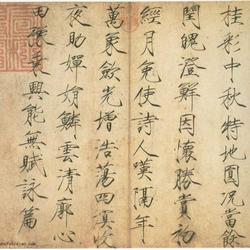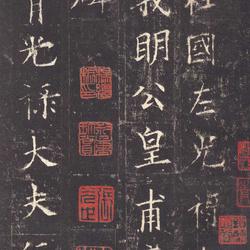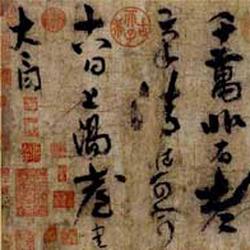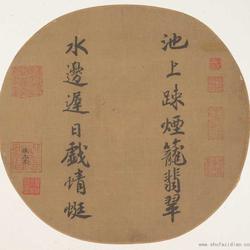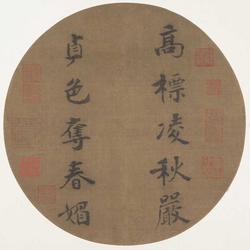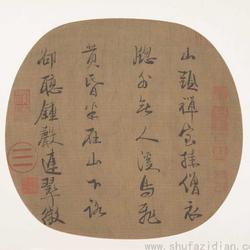Zhao Gou (1107-1187), courtesy name Deji, was the ninth son of Zhao Ji, Emperor Huizong of the Song Dynasty, and the younger brother of Zhao Huan, Emperor Huizong of the Song Dynasty. He was named King Kang at the age of 15. In November of the first year of Jingkang in the Northern Song Dynasty (1126), the Jin soldiers captured Bianjing (now Kaifeng, Henan), the capital of the Song Dynasty. Emperors Hui and Qin were made prisoners, and the Northern Song Dynasty was destroyed. At that time, Kang Wang Zhao Gou was appointed as the general marshal of Hebei's army, with tens of thousands of troops outside. The old generals of the Song Dynasty supported him as emperor. On the first day of May in the following year (1127), the 21-year-old Kang Wang Gou officially ascended the throne in Yingtian Mansion (Shangqiu, Henan, then called Nanjing). He changed the Yuan Dynasty to Jianyan, which was known as the Southern Song Dynasty in history, and Gou became Gaozong. He was the first emperor of the Southern Song Dynasty. In the early years after Zhao Gou came to the throne, he was still able to appoint some anti-war generals. But he was not trying to move north to regain the Central Plains, but wanted to please the Jin people. After moving south, he established his capital in Lin'an (today's Hangzhou, Zhejiang). When he was in power, he "regarded Hangzhou as Bianzhou". He only paid tribute to the Jin Dynasty and declared himself a minister, and lived in peace for thirty-six years.
Zhao Gou was politically incompetent, but he was good at calligraphy. He was good at Zhen, Xing and Cursive. God can create wonderful things wherever he can." His calligraphy influenced and influenced the southern calligraphy world, and many later generations imitated his calligraphy.
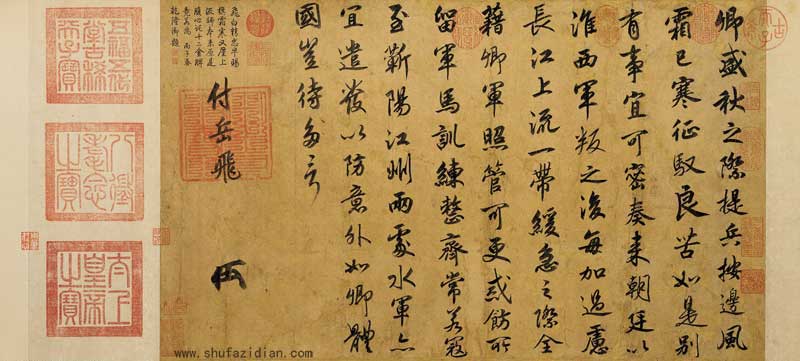
Zhao Gou's "Gift to Yue Fei", on paper, in regular regular script, 36.7 cm in length and 67.5 cm in width. Taipei National Palace Museum.
This book has 17 lines, each line has a different number of words, totaling 99 words. The back is signed with the words "Fu Yuefei", the upper seal is a treasure in front of the emperor, and the lower part has two imperial seals of Emperor Gaozong. Based on the content, it can be inferred that the book was written around the fourth year of Shaoxing (AD 1134) and was written by Emperor Gaozong in his early years. Regardless of the overall layout or the artistic conception of the brushwork, it has the charm of Wang Xizhi's "Lanting Preface" and the characteristics of Zhiyong. It can be integrated and integrated to form its own style, showing "distinctive and independent" and wonderful Runlang's artistic style. The strokes and strokes in his stippling are strong and powerful, beautiful and pleasing to the eye, and there is absolutely no sign of tension. The characters are beautiful and colorful, pure and handsome, and the fonts are between line and true. From this, we can see his iron paintings and silver hooks, and his subjective pursuit of taking advantage of the situation by taking advantage of the side. The whole article has vertical rows and no horizontal columns, and the rows are staggered and well-proportioned; the words and words and the rows are sparse and wide and steady. Although the words are not connected, they are connected by the breath, which is quite like a book. He became the best calligrapher among the emperors of the Song Dynasty.
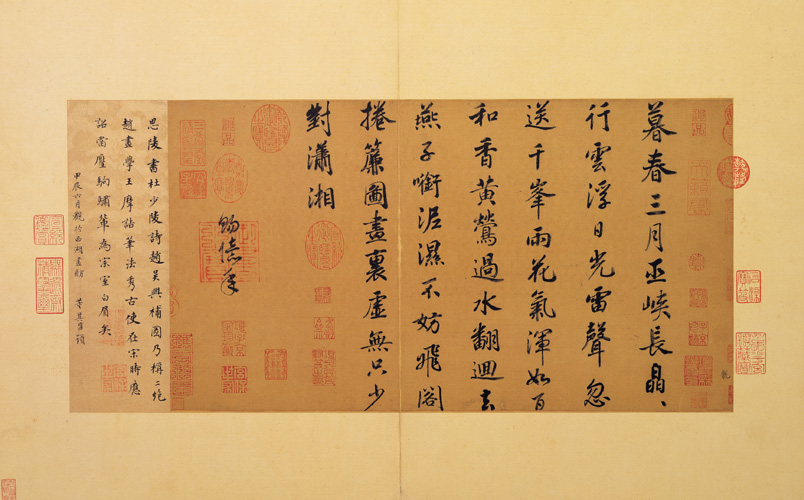
Zhao Gou's "Du Fu's Seven-Character Poems", silk, regular script, 27.1×48.7cm, collected by the National Palace Museum, Taipei
This piece of ink is a seven-character poem written by Du Fu (Ji Shi) written in regular script by Emperor Gaozong of the Song Dynasty. It is also known as "Poetry in Late Spring and March". This poem is written in the center, and the composition is clear and clear throughout the entire page. The fonts are well-proportioned and round, and the ink color is uniform, which is pleasing to the eye. The artistic conception of Du Fu's seven-rhyme poem is picturesque, and Gaozong's pen and ink wash the chain. The two can be said to complement each other. After the poem, there was originally a picture of the poem by Zhao Mengfu of the Yuan Dynasty, but unfortunately it had been cut out.
Emperor Gaozong retired in his later years in the 32nd year of Shaoxing (1162). The regular script written during this period was mostly elegant, smooth, straight and even, with an elegant and unrestrained taste. This work is not only close to this style, but also contains the seal used by Emperor Gaozong during his reign (the Treasure of the Royal Book) behind the poem. Therefore, it is speculated that it was written not far from the time of his retirement.
Young Master Zhao Gou was obsessed with calligraphy. Lu You once said: "Si Ling learned the Eight Dharma wonderfully, paid attention to the ancient elegance, visited and sought out famous paintings and calligraphy, and spared no effort. In his spare time, Yan spent a lot of time playing, copying and copying." He once said to himself: " Since the Wei and Jin Dynasties and the Six Dynasties, I have copied all the writing methods. I have prepared all the styles in the pen, and the conciseness of the meaning is still a matter of choice. When it comes to Ruohu's calligraphy, the testing becomes deeper and the drawing becomes stricter, and it becomes a chant." He compiled and collected Xuanhe. The famous paintings of the Zhan Dynasty, which were lost due to the war in the imperial court, actively promoted the public to study calligraphy. He believed: "If scholars are less diligent in calligraphy, stipple painting will have its place, and there will be no shame in facing the wall." He himself was good at learning "Lanting Preface", so he gave it to princes and ministers. He also asked Song Xiaozong to learn calligraphy. For a time, with Gaozong as the center, there was almost a climax of calligraphy learning in the Southern Song Dynasty. Ma Zonghuo said in "Shu Lin Zao Jian": "Gaozong first learned the character Huang, the world's Xiran learned the character Huang, and later made the character Mi, the world's Xiran learned the character Mi, and finally made the character Sun Guoting, and the character Sun was prosperous... ...It is because of a small skill that only advocates it from the top, and its popularity is like this." This kind of artificial influence on the rise and fall of calligraphy style based on the likes and dislikes of powerful people affected the development of calligraphy in the Southern Song Dynasty, but Song Gaozong's contribution to the calligraphy world of the Southern Song Dynasty was still insignificant. obliterated. He is the author of a volume of "Han Mo Zhi", and his handed down ink writings include "Cursive Script Luo Shen Fu", "Zhengcao Thousand Character Essay" and "Guangming Pagoda Stele", etc. The biographical versions of "Gu Kai's Daughter's History of Admonitions with Inscriptions" and "Chu Suiliang Ni Kuan Zan" are also said to have been written by Gu.

